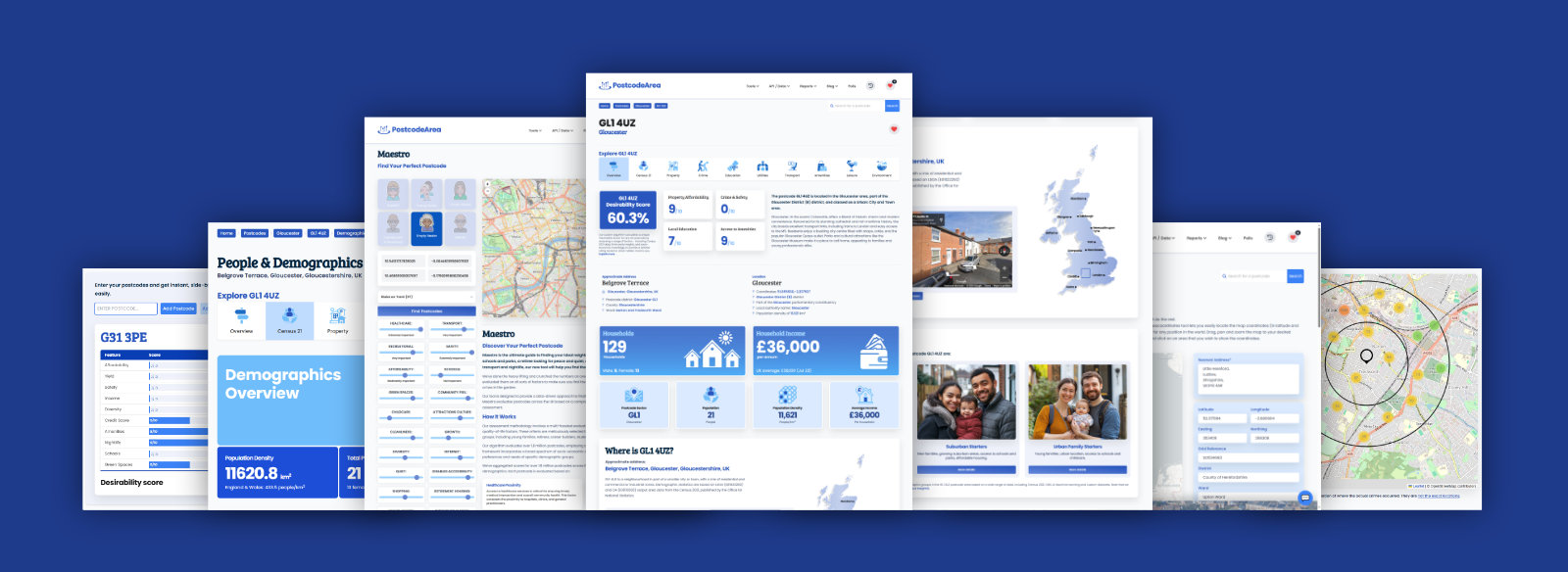W13 (London)
London Postcode Area
London, the heart of Greater London, offers a rich tapestry of neighbourhoods, each with its unique charm. From the bustling markets of Camden to the historic allure of Greenwich, there's something for everyone. With excellent transport links, such as the Tube and bus services, commuting is a breeze. Enjoy diverse amenities, including parks, restaurants, and cultural attractions like the British Museum. Living here means being part of a dynamic community filled with history, arts, and endless exploration opportunities.
Overview
London (W13) postcode district is located in the ceremonial county of Greater London, and is part of the London postal town.
The W13 postcode area, located in the London Borough of Ealing, is a vibrant and diverse community with a population density of 15,864.7 people per sq km. The average house price stands at £497,500, significantly higher than the UK average of £288,000. The area is well-connected by public transport, featuring three London Underground stations and a strong socio-economic profile with 56.7% of residents holding Level 4 qualifications.
Settlements within W13 include:
Ealing
People and Demographics
Demographics
The W13 postcode is a multicultural area with a population that reflects a variety of ethnic backgrounds. The ethnic breakdown shows that 61.9% of residents identify as White, followed by 15.3% Asian, 8.4% Black, and 6.6% Mixed. The average age of residents is 38.6 years, which is slightly younger than the UK average of 40.7 years.
Unemployment
Percentage of people in London W13 who are classed as being unemployed at Census 2021.
An unemployment rate of 5% in London W13 is slightly above the UK average of 4.3%, indicating a moderate level of joblessness.
While some residents may face employment challenges, the rate still suggests a functioning local economy. Efforts to boost job opportunities could further enhance community stability and support the area's long-term growth.
Diversity
Percentage of residents in the W13 postcode region who identify as white.
With 45% of residents identifying as White in London W13, this postcode exhibits a moderate level of ethnic diversity.
The blend of different cultures contributes to a community where varied traditions and perspectives are shared. This enriches residents' experiences and promotes a welcoming environment that values inclusivity and cultural exchange.
Population Growth
Population growth means that the population of London W13 is increasing by 2% each year.
Across the UK, (England, Scotland, Northern Ireland and Wales), the average population grown from 2023-2024 is 0.66%.
Children
Are under 18 years old
20% of London W13 are under the age of 18 at the time of the Census 2021.
London W13 aligns closely with the UK average of 17.4%. This indicates a balanced mix of families and other household types, with amenities catering to both children and adults.
Retired
Are enjoying retirement
15% of London W13 are retired at the time of the Census 2021.
London W13 aligns closely with the UK average of 16%, a mixed community of working-age individuals and retirees. Local amenities are likely to be diverse, and cater to both younger and older residents.
Census 2021 Demographics
Who lives and works in W13?
Analysing the W13 population's characteristics, including age distribution and cultural diversity, provides valuable insights into the composition of the community.
Population
Analysing the W13 population's characteristics, including age distribution and cultural diversity provides valuable insights into the composition of a local community.
Demographics
The W13 postcode is a multicultural area with a population that reflects a variety of ethnic backgrounds. The ethnic breakdown shows that 61.9% of residents identify as White, followed by 15.3% Asian, 8.4% Black, and 6.6% Mixed. The average age of residents is 38.6 years, which is slightly younger than the UK average of 40.7 years.
Population Growth
Population growth means that the population of London W13 is increasing by 2% each year.
Across the UK, (England, Scotland, Northern Ireland and Wales), the average population grown from 2023-2024 is 0.66%.
Children
of London W13 are under the age of 18 at the time of the Census 2021.
Retired
of London W13 are retired at the time of the Census 2021.
Gender Ratio
51% female
Gender ratio in census data means the number of males for every 100 females in a population, helping us understand the balance between men and women in a specific area.
Age Distribution
are adults
Age distribution refers to how different age groups are spread within a population, showing the number of people in each age range. This helps understand the population's structure and potential needs.
Age Distribution
"Age Distribution by 5-year bands" in the Census 2021 breaks down the population into groups based on age ranges, each spanning five years (e.g., 0-4, 5-9, 10-14, etc.). This helps to see how many people fall into each age group, providing a clear picture of the age structure in an area.
Living Arrangements
"Living Arrangements" in the Census 2021 refers to people's relationship status and how they live with others. It includes whether someone is married, in a civil partnership, cohabiting as a couple, separated, divorced, or single, and whether they live with a partner, alone, or with others.
Legal Partnership
Legal partnership status of residents in the London (W13) district, offering insights into the diversity of relationship statuses in the area. This dataset classifies residents aged 16+ in England & Wales by their partnership status.
Gender Identity
"Gender Identity" in the Census 2021 refers to how people personally identify their gender, which may or may not align with the sex they were assigned at birth. It includes options like male, female, non-binary, or other identities, reflecting how individuals see themselves.
Postcodes
Dig even deeper into the W13 postcode:
Click on an postal code below for more information about the area. Each postcode give you a comprehensive overview of the postcode neighbourhood, including address, demographics, crime, transport, amenities and house prices in London (W13).
Word Cloud for W13
We've trawled social media and the web to discover words that describe the postcode district of W13:
Nearby Towns & Cities
W13 Postcode area
The following towns and villages can be found close to London W13:
Westminster
Population 218,791
1 miles
Westminster, with its iconic landmarks like Big Ben and Buckingham Palace, offers a rich blend of history, culture, and vibrant city living, making it the perfect place to immerse yourself in the heart of London while enjoying a diverse range of amenities and attractions on your doorstep.
Nearest Postcode Areas:
London
Population 8,173,941
4.6 miles
The capital of England and most populous city in the United Kingdom, London stands on the River Thames, and has been a major settlement for two millennia. A metropolis of arts, culture, sport and entertainment are sure to delight all.
Nearest Postcode Areas:
Local Authorities
W13 Postal Town
The W13 postcode includes the following local authorities:
- Ealing
Crime in W13
How safe is this postcode sector?
In the W1 postcode area, crime levels have been relatively stable in recent years, with a slight decrease in reported incidents. The area is known for its bustling streets, high-end shops, and vibrant nightlife, which can attract both residents and visitors alike. Policing in the W1 postcode area is primarily carried out by the Metropolitan Police Service, with officers dedicated to patrolling the streets and responding to emergencies.
Key Hotspots
Some key hotspots in the W1 postcode area include Oxford Street, known for its shopping district and large crowds, as well as Soho, a popular nightlife destination. These areas can sometimes attract pickpockets and other opportunistic criminals, so it's important to remain vigilant when out and about.
Historical Crime Issues
In the past, the W1 postcode area has faced challenges with drug-related crimes, particularly in areas like Soho. However, increased police presence and community outreach efforts have helped to address these issues and reduce crime rates over time.
Current Policing Priorities
The Metropolitan Police Service has identified several key priorities for policing in the W1 postcode area, including tackling violent crime, addressing anti-social behaviour, and improving community engagement. By working closely with local residents and businesses, the police hope to create a safer and more secure environment for everyone in the area.
the W1 postcode area remains a vibrant and diverse community, with a strong police presence and a commitment to keeping residents and visitors safe. By staying informed and aware of your surroundings, you can help contribute to a positive and secure environment for all.
Sources:
Metropolitan Police Service
Police UK
In the W1 postcode area, crime levels have been relatively stable in recent years, with a slight decrease in reported incidents. The area is known for its bustling streets, high-end shops, and vibrant nightlife, which can attract both residents and visitors alike. Policing in the W1 postcode area is primarily carried out by the Metropolitan Police Service, with officers dedicated to patrolling the streets and responding to emergencies.
Key Hotspots
Some key hotspots in the W1 postcode area include Oxford Street, known for its shopping district and large crowds, as well as Soho, a popular nightlife destination. These areas can sometimes attract pickpockets and other opportunistic criminals, so it's important to remain vigilant when out and about.
Historical Crime Issues
In the past, the W1 postcode area has faced challenges with drug-related crimes, particularly in areas like Soho. However, increased police presence and community outreach efforts have helped to address these issues and reduce crime rates over time.
Current Policing Priorities
The Metropolitan Police Service has identified several key priorities for policing in the W1 postcode area, including tackling violent crime, addressing anti-social behaviour, and improving community engagement. By working closely with local residents and businesses, the police hope to create a safer and more secure environment for everyone in the area.
the W1 postcode area remains a vibrant and diverse community, with a strong police presence and a commitment to keeping residents and visitors safe. By staying informed and aware of your surroundings, you can help contribute to a positive and secure environment for all.
Sources: Metropolitan Police Service Police UKEducation
Highest Rated Schools in W13
As rated by Ofsted
- Castlebar School
Hathaway Gardens, London, W13 0DH
Outstanding - Insights Independent School
45415, West Ealing, W13 0NP
Outstanding - Fielding Primary School
Wyndham Road, London, W13 9TE
Outstanding - Woodlands Academy
Hathaway Gardens, London, W13 0DH
Good - Springhallow School
Compton Close, London, W13 0JG
Good - Drayton Green Primary School
Drayton Grove, London, W13 0LA
Good - St John's Primary School
St John's Primary School, London, W13 0SE
Good

Unlock the full power of postcode insights.
Data is meaningless without context. Reveal the stories behind a neighbourhood, and make smarter decisions with data you can trust. Gain unlimited access to detailed statistics, exclusive reports, and essential tools.
PostcodeArea is grateful to our sponsors for their support.






